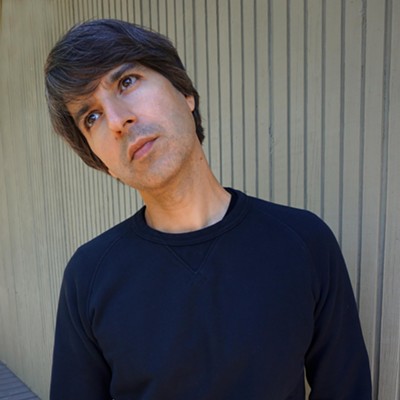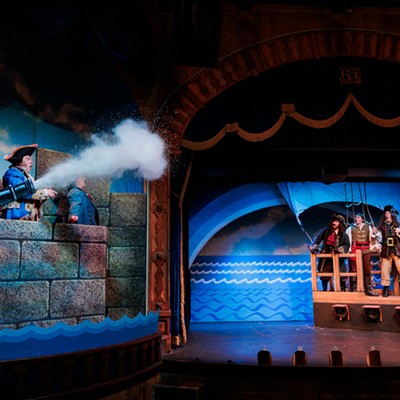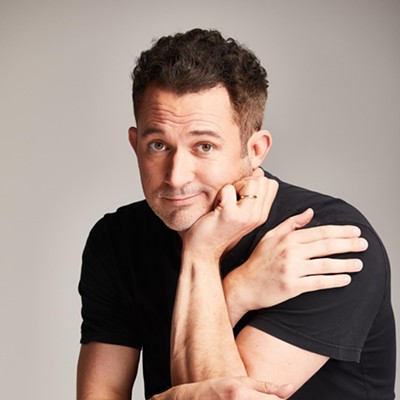Oh, downtown Tucson. You are not cluttered with high-rise towers or flashy city lights. There is no crime-infested subway zipping through. Come to think of it, you are devoid of many things that are stereotypically ... downtownish.
Some see this as a bad thing.
"Downtown is a little bit like the kid who never performs right in his parents' eyes," says architect and artist Bill Mackey.
If the people of Tucson have assumed the role of nagging parents, then this is a chance for them to display their youngster's math test on the fridge—and acknowledge downtown's progress.
Artists Mackey, Julie Ray, Rachelle Diaz and Kimi Eisele present +/-92: Downtown Master Plans, 1932-2009, an exhibit that showcases more than 100 master plans and projects proposed for downtown Tucson over the years.
The four artists all assumed different roles for the exhibit. Mackey, an architect and artist who graduated from the UA in 1994, is affiliated with Design Co*op, as well as Worker, Inc.—two of the organizations putting on the event. Mackey went to roughly 15 public and private entities to obtain plans, although he says there was no way he could get his hands on every single sketch from the last 70-plus years.
"The plans range from pretty colorful wowy-zowy graphics to plain text, like many of those from the '40s and '50s," he says.
Ray, a local graphic designer, says the sheer number of plans turned the project into a daunting one. Still, Mackey says, this is only the tip of the iceberg.
"There is no other place in town that has been planned so rigorously and continuously," says Mackey.
Why such an emphasis? "It is everybody's and nobody's," he says.
In January, Ray and Diaz co-founded Pop Up Spaces (popupspaces.org), an organization dedicated to creating interactive art experiences in empty downtown spaces. This exhibit is no exception to the organization's previous events: The goal is to engage the people of Tucson.
An interactive timeline coinciding with the plans allows attendees to pencil in relevant events—or even irrelevant ones. (Birthdays are totally acceptable, says Mackey.)
Ray was in charge of collecting photographs of venues that make downtown unique, which are also open to public commentary. If you think the Fox Tucson Theatre is a good thing for the community, slap a green dot on there. If you detest the sight of skateboarders congregated at the train station, give that photo a red.
"In most of the master plans themselves, public input is very important," says Eisele, a multidisciplinary artist and member of Design Co*op. "What does the community want?"
In that spirit, Eisele put together an impromptu crew of "apparatchiks" who will issue surveys to the public (and who may just break into musical theater). She says the surveys are partially respectful of the feedback process, and partially tongue-in-cheek to reflect the reality that the process—including the people's wishes and the city's budget—don't always match up.
Indeed, a lack of funding prevented many of the displayed plans from becoming reality. The unrealized plans take viewers on a road to what could have been. Mackey recalls one unfulfilled plan that suggested the removal of the train tracks that separate downtown from Fourth Avenue. Fourth Avenue has often been excluded from government-sanctioned downtown designs, perhaps because the Fourth Avenue Merchants Association is a private entity. However, to do away with the hard and fast physical barrier that divides downtown and Fourth Avenue would have produced interesting results, Mackey says.
The team is not trying to make any sort of commentary on the progress of Rio Nuevo, the current downtown redevelopment effort that was started after voter approval in 1999. After studying many a master plan, Mackey claims he is not at liberty to say whether downtown is headed in the right direction. In fact, he says, there is no right or wrong path for Tucson's highly critiqued and coddled offspring. He simply says: "Downtown is on its track."
Whatever that may be.
"I'm taking the role of a neutral curator," says Mackey. "I'll let the public ascertain how important it is to see what the history means."
A $5 guide featuring selected plans will be available for purchase. Those who make it to the grand opening can expect light refreshments.







